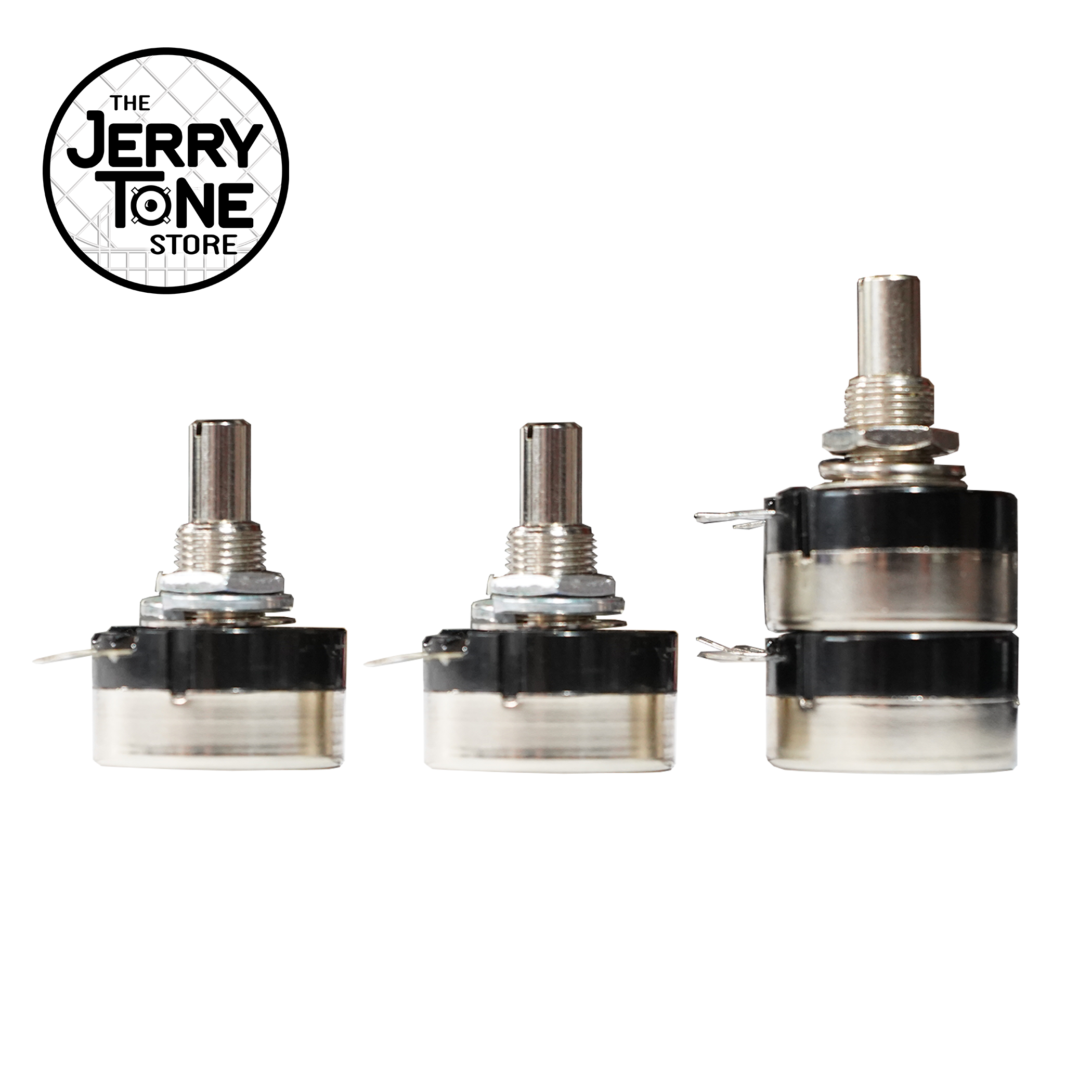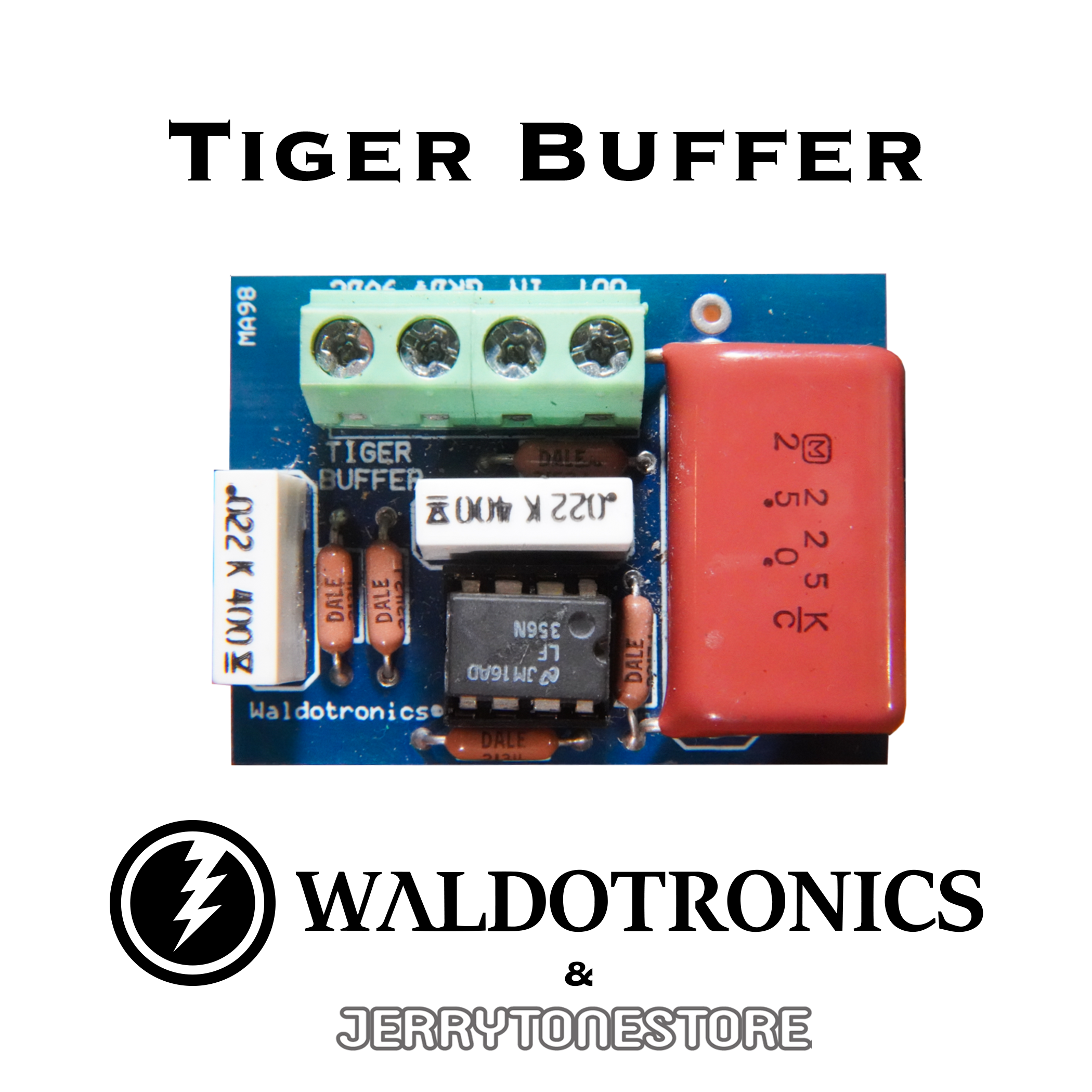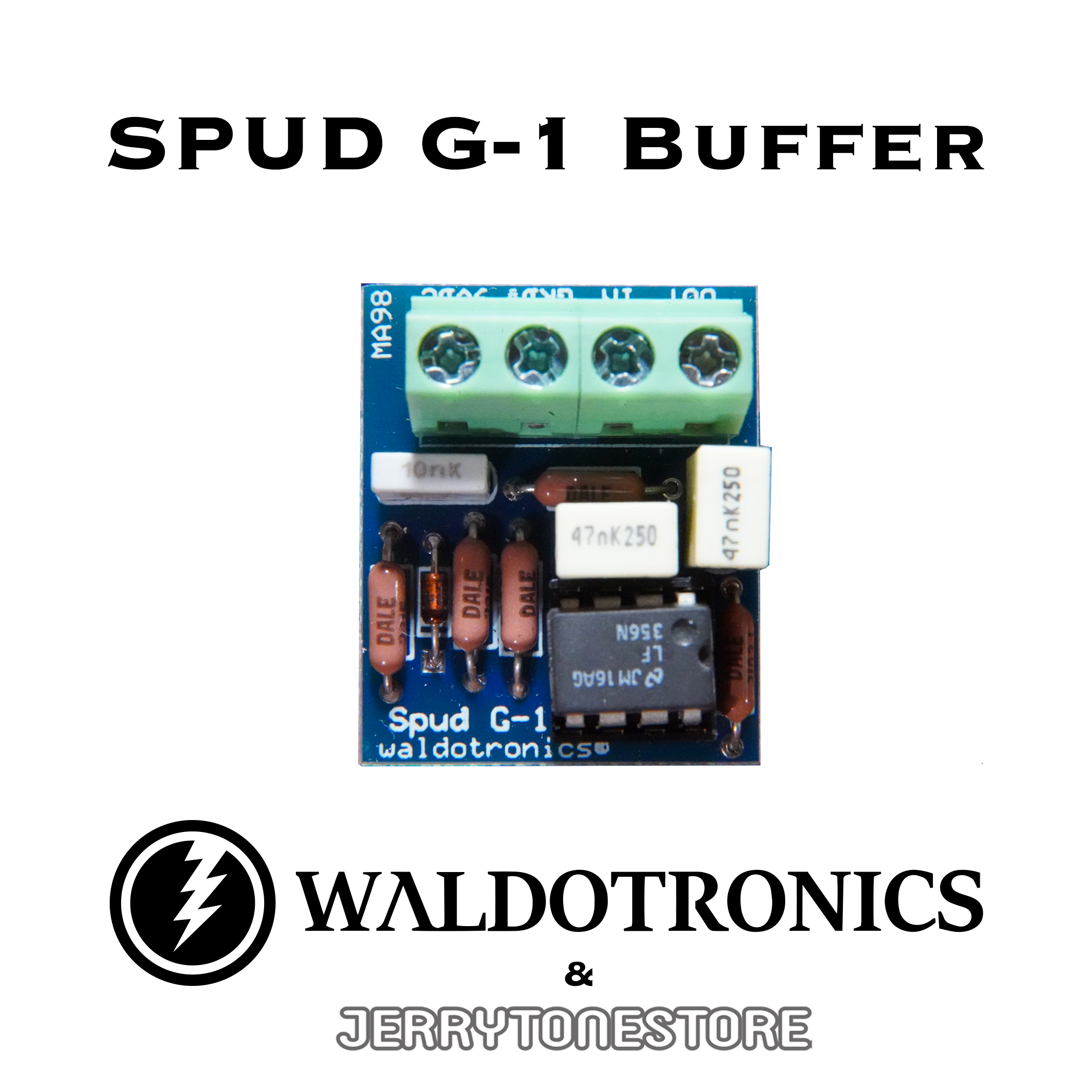 Image 1 of 2
Image 1 of 2

 Image 2 of 2
Image 2 of 2



Waldotronics "Wolf" Spud JFET II Buffer
Mike Wald, aka Waldo, creator of Waldotronics, has been researching Jerry tone and unveiling each detail to our community for over 15 years now - as more and more information has emerged over the years, Waldo has been able further refine each piece of the Jerry tone puzzle. Finally, after years of quests, he has been able to create more accurate versions of the actual buffers used on Jerry’s buffer-equipped guitars.
The Spud JFET II buffer is the result of waldo’s meticulous research of the mysterious circuit only recently discovered to be used by Jerry - The Maestro Healy informed him that they started out their journey using JFET Source Followers - Waldo reverse-engineered the JFET II. Jerry used the JFET Source Follower circuit with both Travis Beans and Wolf, from Dec 31, 1976 up until Tiger’s arrival in Aug 79. It was John Cutler who informed Waldo during his research of a key nugget of information: Jerry had asked Cutler to make Tiger's buffer with only one stipulation - he wanted it to be Unity Gain. There were 2 Tiger buffers, the first one Waldo named the JGJC-1, or “Early Tiger” buffer, was designed for use with the Dimarzio Dual Sound pickups wired in parallel/series same as Wolf was just prior to Tiger's arrival. It is an actual clone from a schematic given to him that had been drawn by George Mundy in 1993. At the end of Dec 1979, Tiger got a pickup change from the Dual Sounds to Dimarzio Super 2 - along with this pickup change, the wiring also changed to series/split configurations, to which Cutler had to adapt. This is when he made Tiger’s 2nd Buffer, which was also unity gain, but set to be used with the Super 2's, and eventually later used with Dual Sounds when Jerry changed pickups again in Tiger (in the middle of July 1988). Jerry's Modulus backup to Tiger arrived in 1985, and Cutler turned over the reins of making the buffer for it to Rob Turner of EMG. Rob created the custom JG-1 with the guidance of Cutler, and this is what was used in Wolf and Rosebud. Waldo's G-1 is a through-hole faithful cloned version of that circuit. The G-2 is also a faithful cloned version of the EMG JG-2 adjustable gain buffer found in the final version of Wolf still used today, as well as Bolt.
We recommend that each buffer is paired with the period-correct pickups, although feel free to mix and match! The Spud JFET II buffer will sound fabulous with Dimarzio Super Distortion/Dual Sound (they are the same) pickups, or any Travis Bean style pickups. It is slightly “cleaner” sounding when compared to the JCJG-1 from the early tiger years, maybe brighter than the Tiger buffer slightly, but not as bright as the Spud G-1. I have this buffer equipped in my blue stratocaster, and find it to be one of the most transparent options out of all the buffers.
Mike Wald, aka Waldo, creator of Waldotronics, has been researching Jerry tone and unveiling each detail to our community for over 15 years now - as more and more information has emerged over the years, Waldo has been able further refine each piece of the Jerry tone puzzle. Finally, after years of quests, he has been able to create more accurate versions of the actual buffers used on Jerry’s buffer-equipped guitars.
The Spud JFET II buffer is the result of waldo’s meticulous research of the mysterious circuit only recently discovered to be used by Jerry - The Maestro Healy informed him that they started out their journey using JFET Source Followers - Waldo reverse-engineered the JFET II. Jerry used the JFET Source Follower circuit with both Travis Beans and Wolf, from Dec 31, 1976 up until Tiger’s arrival in Aug 79. It was John Cutler who informed Waldo during his research of a key nugget of information: Jerry had asked Cutler to make Tiger's buffer with only one stipulation - he wanted it to be Unity Gain. There were 2 Tiger buffers, the first one Waldo named the JGJC-1, or “Early Tiger” buffer, was designed for use with the Dimarzio Dual Sound pickups wired in parallel/series same as Wolf was just prior to Tiger's arrival. It is an actual clone from a schematic given to him that had been drawn by George Mundy in 1993. At the end of Dec 1979, Tiger got a pickup change from the Dual Sounds to Dimarzio Super 2 - along with this pickup change, the wiring also changed to series/split configurations, to which Cutler had to adapt. This is when he made Tiger’s 2nd Buffer, which was also unity gain, but set to be used with the Super 2's, and eventually later used with Dual Sounds when Jerry changed pickups again in Tiger (in the middle of July 1988). Jerry's Modulus backup to Tiger arrived in 1985, and Cutler turned over the reins of making the buffer for it to Rob Turner of EMG. Rob created the custom JG-1 with the guidance of Cutler, and this is what was used in Wolf and Rosebud. Waldo's G-1 is a through-hole faithful cloned version of that circuit. The G-2 is also a faithful cloned version of the EMG JG-2 adjustable gain buffer found in the final version of Wolf still used today, as well as Bolt.
We recommend that each buffer is paired with the period-correct pickups, although feel free to mix and match! The Spud JFET II buffer will sound fabulous with Dimarzio Super Distortion/Dual Sound (they are the same) pickups, or any Travis Bean style pickups. It is slightly “cleaner” sounding when compared to the JCJG-1 from the early tiger years, maybe brighter than the Tiger buffer slightly, but not as bright as the Spud G-1. I have this buffer equipped in my blue stratocaster, and find it to be one of the most transparent options out of all the buffers.






